Biography of Joaquín Sorolla
Valencia, February 27, 1863 - Cercedilla, August 10, 1923)
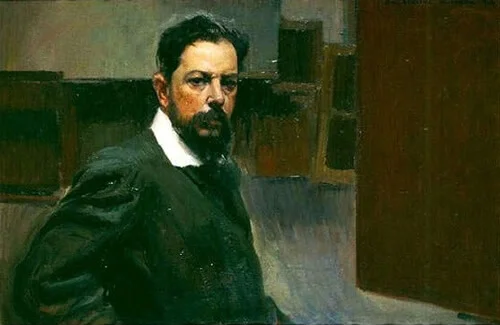
Self-portrait
Sorolla is the best example of Spanish impressionism, with an interpretation based on the complete importance of light and the movement of figures. Changes in the intensity of light can modify colors and blur forms. Sorolla's colors are pure - without blending - with short, juxtaposed brushstrokes that increase brightness.
According to Sorolla, "Art has nothing to do with ugliness or sadness. Light is the life of everything it touches, so the more light in a painting, the more life, more truth, more beauty." He always placed importance on illumination techniques and his command of drawing and color to reproduce the effects of light. His extraordinary memory allowed him to paint works in a large format that retained the light and movement of an entire scene from one brief moment.
The term "luminism" was created in 1945 by John Baur, the director of the Whitney Museum of New York, to describe a type of United States landscape painting in the mid-twentieth century in which the study of light is especially important. Some authors have proposed the term "Sorollism" to describe their work.
From a young age, Sorolla was also interested in painting outdoors, with which he tried to capture Mediterranean light in Valencian gardens and beaches in the same way as the French impressionists. Among his preferred subjects, his dedication to Levantine landscapes and the coastal environment, always with a human presence, expresses the complete importance of light.
Sorolla's work is surprising because of its volume - there are almost three thousand paintings and over twenty thousand drawings and sketches. Although we observe the impressionist esthetic in his work, there is no doubt the study of Velázquez and Goya has an influence on his design and subjects. Sorolla demonstrates a thick blotting technique that captures the luminous vibrancy of the Mediterranean sky, open sails, sand, and especially children with damp bodies in his Valencian beach and fishing scenes.
Joaquín Sorolla y Bastida was born in Valencia, the son of Joaquín Sorolla Gascón and María Concepción Bastida Prat. He was born in a fishing neighborhood (a fact that probably influenced the painting of the several pieces he completed with this theme). A year later, his only sister, Concha Sorolla, is born. Both children are left orphans in 1865 when their parents die in a cholera epidemic. They are raised by their maternal aunt and uncle.
Sorolla's uncle is a locksmith. He tries to teach the trade to his nephew from a young age, but although Sorolla does his work, his interest is focused on drawing. At the advice of the director of the secondary school where Joaquín attended, his adoptive father enrolls Sorolla in night classes at the Escuela de Artesanos of Valencia in 1876. Two years later, with his aptitude for painting in mind, Sorolla is enrolled in the Escuela Superior de Bellas Artes of Valencia; thus begins Sorolla's training period.
In this period of formation, Sorolla already shows himself as a realist who is greatly influenced by Valencian seascape painters - Rafael Moleón among others. However, he has not yet defined his style. In 1881, Sorolla finishes his studies and meets painter Ignacio Pinazo, who, upon returning from Italy, brings a new way of treating light based on the use of blotting methods, agreeing with impressionism in the search of lighting effects. Sorolla adopts his style.
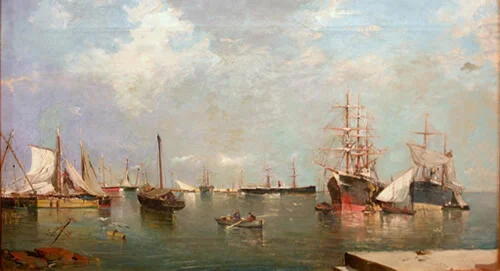
Seascape, 1880
In the Academy, Sorolla meets another student who is the son of Antonio García, a well-known photographer. He gives Sorolla work developing photographs. This relationship would affect his personal life, since Antonio García is the father of Clotilde García, who would later become Sorolla's wife.
In 1881, Sorolla sends three Valencian seascapes to the National Fine Arts Exhibition in Madrid.
In 1884, the Provincial Council of Valencia organizes a painting competition in which Sorolla is presented with a scholarship to Rome to perfect his studies. The mandatory theme is the 1808 War of Independence. Sorolla presents The Cry of the Palleter, in which he represents the national hero, a straw seller, encouraging the people to join the uprising against Napoleon. The painting impresses the jury, which his how Sorolla obtains the scholarship. He moves to Rome at the beginning of 1885.
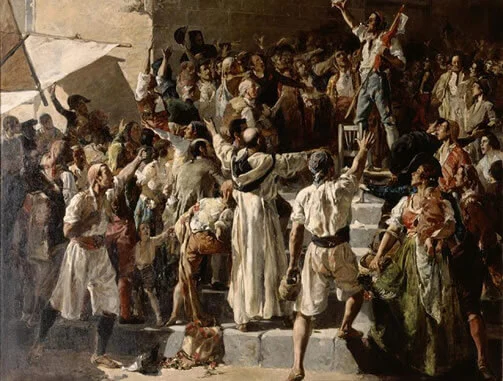
The Cry of the Palleter
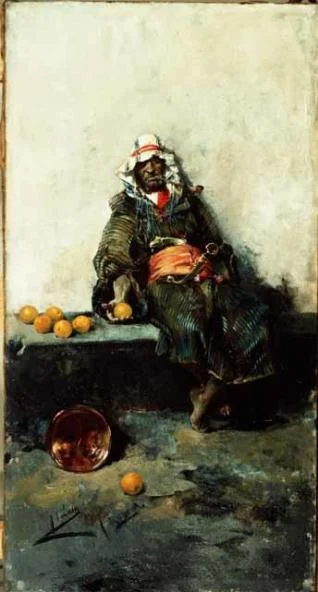
Moor with Oranges, 1885r
In Rome, Sorolla becomes interested in the great masters of the Italian Renaissance and also in the work of Mariano Fortuny, whose orientalist influence is reflected in Sorolla's piece Moor with Oranges.
Sorolla travels through Italy and arrives in Paris, where he is impressed by Jules Bastien-Lepage's use of realism and social criticism. There, he also meets German artist Adolf Menzel, whose work, full of brilliant colors, can be compared with that of Salvá and Pinazo.
Returning to Italy, Sorolla acquires a long brushstroke, which would be a characteristic of his later work. An example of this is The Burial of Christ, which is presented in the National Exhibition of 1887, and for which Sorolla is criticized for paying more attention to the evening light than the sacred drama. Unfortunately, the work is not preserved. Sorolla destroyed it in a rage due to the critiques he received. There are only one small preparatory sketch and four fragments which would be recovered from the basement of the Sorolla Museum in 1979.
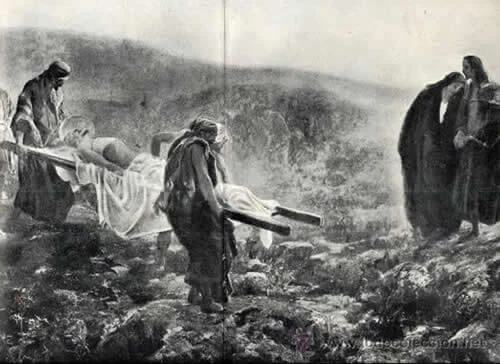
Sketch of The Burial of Christ, presented in the National Exhibition of 1887
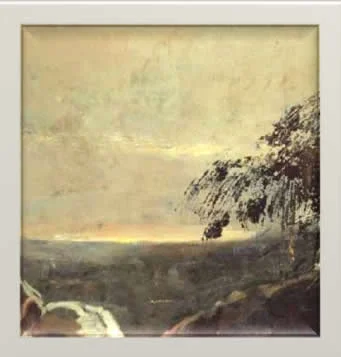
Fragment belonging to the painting The Burial of Christ corresponding to the upper right portion next to St. John's head, which is suggested in the lower left corner
In 1888, the Provincial Council of Valencia extends Sorolla's stay in Italy for one more year. For that reason, Sorolla sends the work Father Jofré Protecting a Madman.
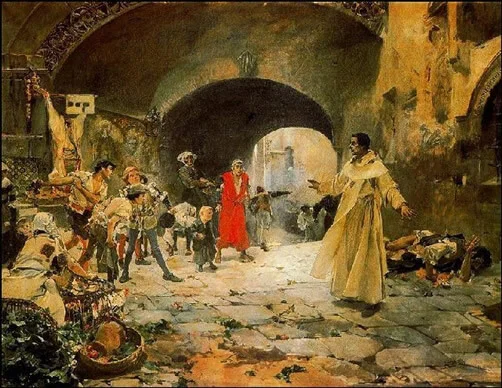
Father Jofré Protecting a Madman, 1887
In September of 1888, Sorolla returns to Spain to marry Clotilde García del Castillo, daughter of photographer Antonio García.
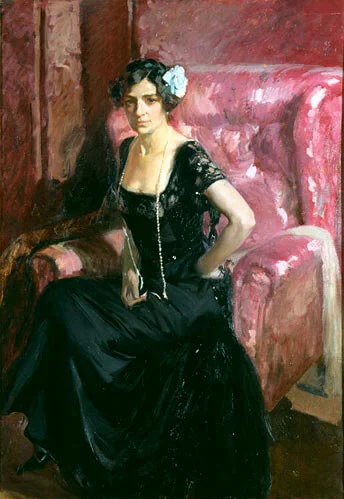
Clotilde in an Evening Dress, 1910
The couple returns to Italy, where they stay in Assisi until 1889, the year that Sorolla finishes his scholarship.
Upon returning to Spain, Sorolla begins a new period of consolidation as an artist, searching for his own style. This style, though acknowledging similarities with impressionism, has some differences including long brushstrokes, not short like those of the impressionists. Sorolla also uses black, considered a "noncolor" by impressionists. For Sorolla, the costumbrista theme and light are both fundamental, while the only important theme for impressionists is light. At the end of the nineteenth century, Sorolla is a painter who is more tied to naturalism and who values light and color to present reality.
Along with his wife Clotilde, Sorolla moves to Madrid looking for better artistic opportunities.
An important work from this period in Madrid is Another Marguerite!, which earns Sorolla the first place medal at the National Exhibition of Fine Arts of 1892. The work recreates a scene that the artist saw on a trip: a mother who murdered her child being taken to prison in a train car by a pair of military policemen. The drama of the scene stands out, accentuated by the expressions and gestures of the characters. Light plays a very important role in the composition. To complete this painting, Sorolla rented a third-class train car for fifteen days.
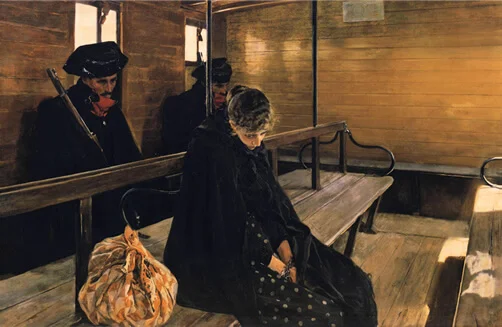
The Other Marguerite, 1892
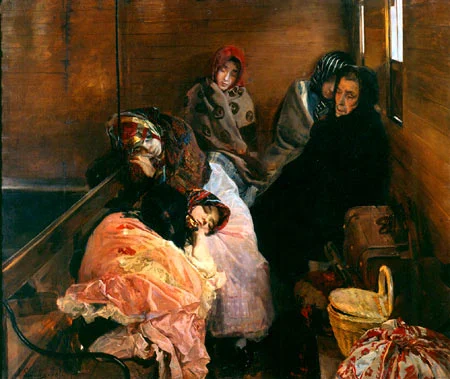
The White Slave Trade, 1894
It appears to be a costumbrista painting, which is defined by the dominance of light and represents scenes of the everyday life of fishermen and farmers. This style interested the high bourgeoisie.
Social realism is also reflected in The White Slave Trade, which portrays servants sleeping in a train station.
Sorolla paints the piece And They Still Say Fish is Expensive! with which he gains the first place medal in the National Exhibition of 1895 and which is purchased by the Spanish State. The scene depicts a young fisherman stretched out inside a boat being helped by two workmates; one is holding him under the arms and the other is cleaning his wound with a rag. In this piece, Sorolla abandons the luminist style and adapts an academic realism while maintaining important contrasts of light and shadow. The gestures of the fishermen show great expressivity. The colors are dark and earthy, following the tradition, although Sorolla also introduces green and blue tones.
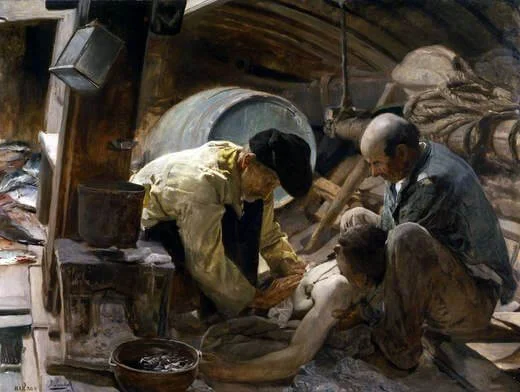
And They Still Say Fish is Expensive!, 1895
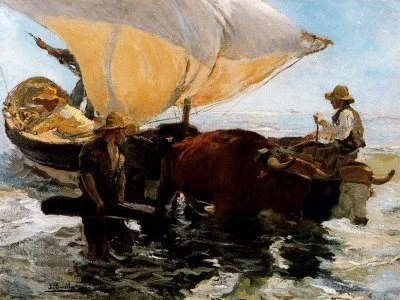
Return from Fishing, 1894
With Return from Fishing, painted at the same time as the previous work, Sorolla finds not only himself, but also the wild and constant light that he has always longed for and pursued since his beginnings in Assisi. This painting is one of Sorolla's first international successes. Being acquired by the French government, and later destined for the Luxembourg Museum, the work is awarded the Second Class Medal in the Paris Salon of 1895. With this work, Sorolla expresses his artistic ideal.
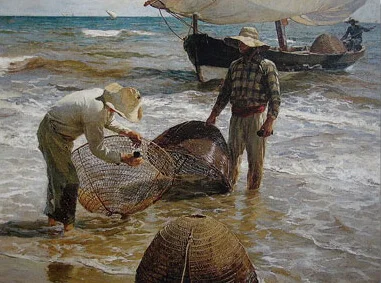
Valencian Fishermen, 1895
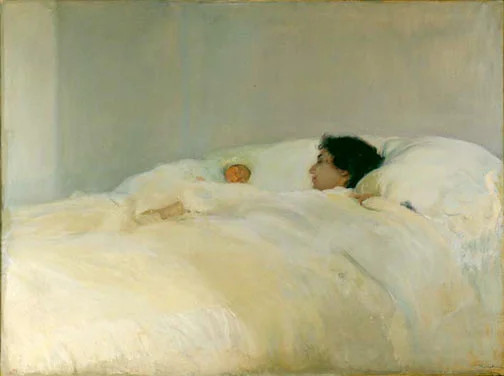
Mother, 1895
In 1895, Sorolla's youngest daughter, Elena, is born in Valencia, leading to Sorolla's interest in the theme of children, which he would make use of continuously from this point on with great success. Mother portrays Clotilde and Elena, although the painting was done in Madrid and the model was really his recently born nephew. It is a very simple but effective composition, using blue tones to depict Clotilde's fatigued face after delivery. The child, on the other hand, has pink tonality producing a radiant effect. Brightness exudes from the bed, a fluffy mass of white light outlined by a light gray wall. A small range of grays dominate the painting, but Sorolla used yellow and green tones to give the feeling of volume - a technique that is rarely used in his work, which is generally more colorful. From this moment on, representations of his family, in different life stages, will be frequent.
In this period, the involvement of Sorolla's friend Aureliano Beruete is also decisive. He suggests that Sorolla work as a portrait painter because he could have great success, and that is what happens. He enjoys great prestige and is sought after to paint portraits of public figures in the finance world, the arts, politics, and more. This phenomenon occurs in the first years of the twentieth century, which is when Sorolla's portraits come into style in Madrid.
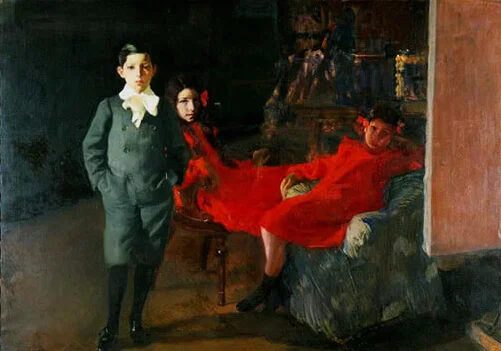
My Children, 1904
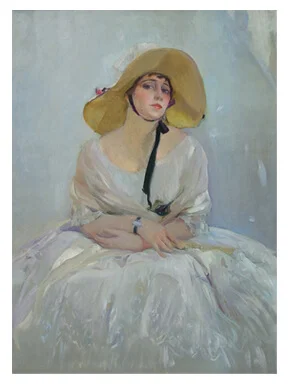
Raquel Meller, 1918
The defining characteristic of Sorolla's portraits is the familiarity with which Sorolla presents his models, portrayed as if the viewer knew the model. Sorolla always tries to focus attention on the face, which is usually more illuminated as compared to the clothing and background. There is important line drawing at the base, but the brushstrokes are loose. Details give way to light and expressivity, as seen with the great Baroque Spanish painters - Velázquez, whom Sorolla had studied in detail, more than anyone.
In addition to the portraits requested by specific clients, those for the Hispanic Society must be added. Before ordering The Provinces of Spain, Huntington commissions Sorolla for a series of portraits of famous Spaniards for the library of the institution he had founded. This grouping, which is known as "The Iconographic Gallery of Distinguished Spaniards," is completed between 1909 and 1920 with oil paintings of Sorolla's prominent contemporaries who are connected to the academic and scientific world, some of them distinguished members of the Generation of '98.
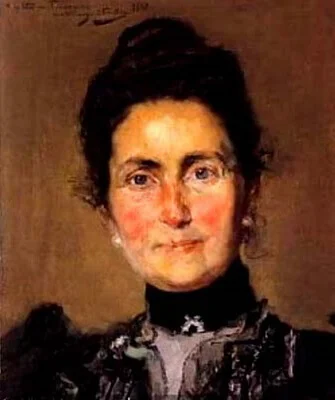
Portrait of Mrs. Traumann
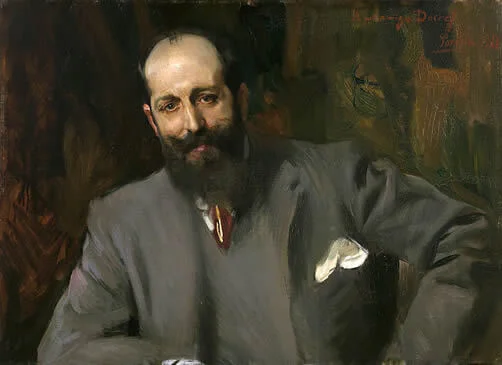
Portrait of Dr. Joaquín Decref y Ruiz, 1907
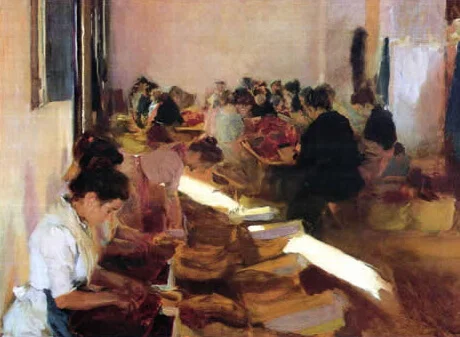
Packing Raisins, 1901
At the same time, Sorolla becomes a cosmopolitan artist. He travels throughout Europe, meeting and striking up friendships with the great painters of the time, including the avant-garde artists.
Sorolla summers in Jávea for three years. He is a tireless worker, taking advantage of this time of rest to leave us numerous works. The following stand out among them: Cape San Antonio, Isla de Cap Martí (1905), Swimmers, Packing Raisins (1901), The Waterwheel of Jávea, Alcira Orange Trees, Rowboat in the Lagoon, etc.
Sorolla's desire not to become stuck in a single theme also leads him to travel through Spain looking for new shades of light and new distinct colors at the beach in Valencia - which he does in the following years - making sketches of a wide variety of people and landscapes.
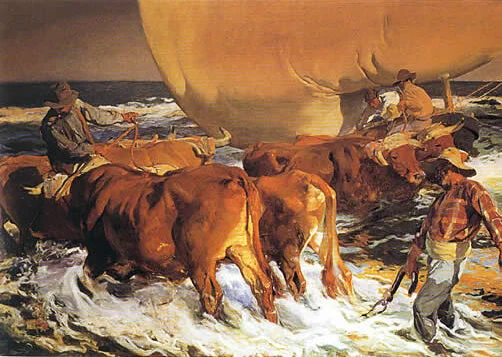
Afternoon Sun, 1903
In 1903, Sorolla paints Afternoon Sun, which, according to Sorolla, is the best of his paintings. He also paints Summer. Brightness, coloring, and power are observed in his works. The colors depict strong contrasts of yellows, ultramarine blues, and emeralds, and they create a sensation of grand reality. Sorolla depicts shadows through blue and violet tones, like the impressionists. However, he does not adopt the short brushstroke, nor does he stop blending colors on the pallet as can be seen in The White Boat.
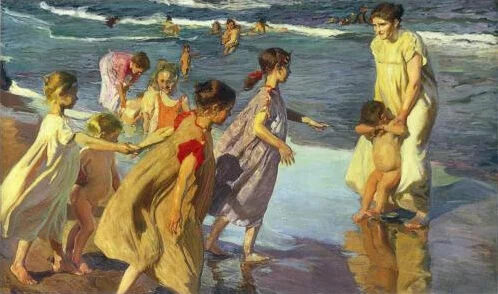
Summer
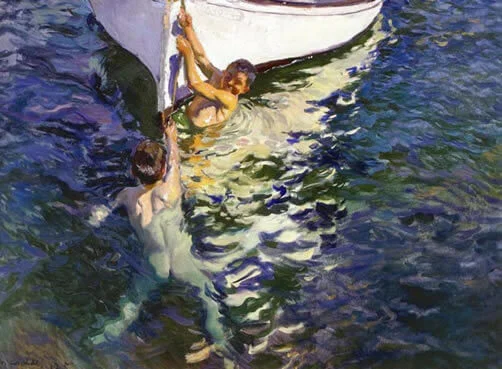
The White Boat, 1905
In just five months in 1906, Sorolla paints seventeen portraits. Among those who pose for him are the Royal Family, which shows how Sorolla's popularity had grown. The portraits of Maria Christina of Habsburg and her son, the future Alfonso XIII, are completed as a commission by the Ministry for Foreign Affairs. In 1907, at the Royal Family's request, Sorolla completes their portraits at La Granja in San Ildefonso.
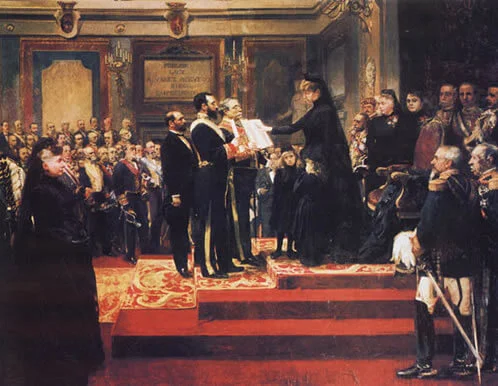
Oath of Maria Christina of Habsburg
In 1911, Hispanic North American Milton Huntington entrusts Joaquín Sorolla with a very special commission that would occupy the last years of his life: the decoration of a large rectangular room in the Hispanic Society, which was founded at the beginning of the twentieth century with the goal of teaching Spanish culture in the United States. Sorolla would complete a series of panels illustrating the different provinces of Spain, portraying their particular character through landscapes and people.
The room, first projected to be a library, is finally converted into the "Sorolla Room" with fourteen panels of great size painted in oil. They would be mounted posthumously in 1926. This series, which Sorolla begins sketching in 1911, would be completed in 1919 and its execution would take the artist on trips throughout Spain, painting and making sketches for the eight years that the project's creation lasted.
In 1913, although he has not stopped using various types of paintings, he begins to paint the panels directly from nature. This year he completes the monumental work The Bread Festival (Castile). During the following year, he completes five panels: The Nazarenes (Seville), The Jota (Aragon), The Town Council of Roncal (Navarre), The Game of Skittles (Guipúzcoa), and The Round Up (Andalusia). In 1915, he paints four more; in 1917, only one panel, The Market (Extremadura). Between November 1918 and January 1919, he completes The Palm Grove (Elche). Finally, that same year, 1919, he paints the last of the panels: The Tuna Catch (Ayamonte).
In total, this colossal work occupies the last years of his active life; he himself considers it his "life's work," calling it by that name exactly in different writings that have been preserved.
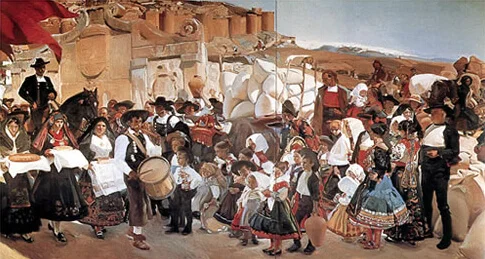
The Bread Festival, Castile
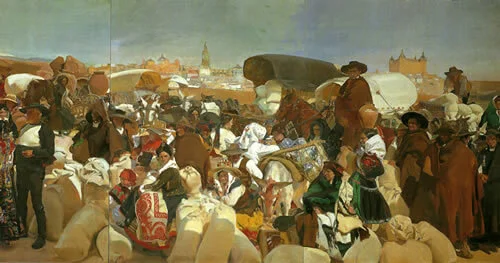
The Bread Festival, Castile
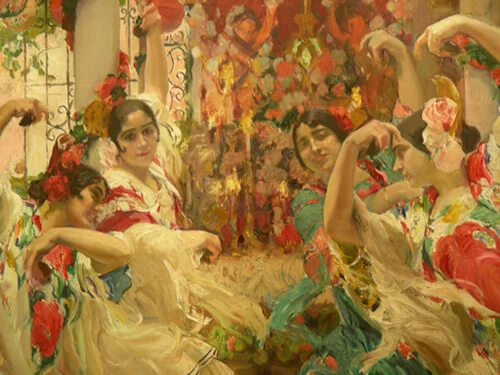
On June 29, 1919, Sorolla sends a telegram to his family from Ayamonte telling them that he has finished the last painting. Unfortunately, Sorolla cannot travel to New York for the mounting of the panels because, on June 17, 1920, he suffers a stroke. Sorolla's illness prohibits him from delivering the work and from collecting what had been agreed upon. The Hispanic Society of America has to await the artist's death on August 10, 1923, and the resolution of what had been related in his will, before settling the contract signed in 1911. This is why the Sorolla Room wasn't inaugurated until January 16, 1926.
In the United States and Europe, courses changed, and the Valencian's paintings were left on the margins of the new style. Sorolla's work has only gained more support as recently as this century.